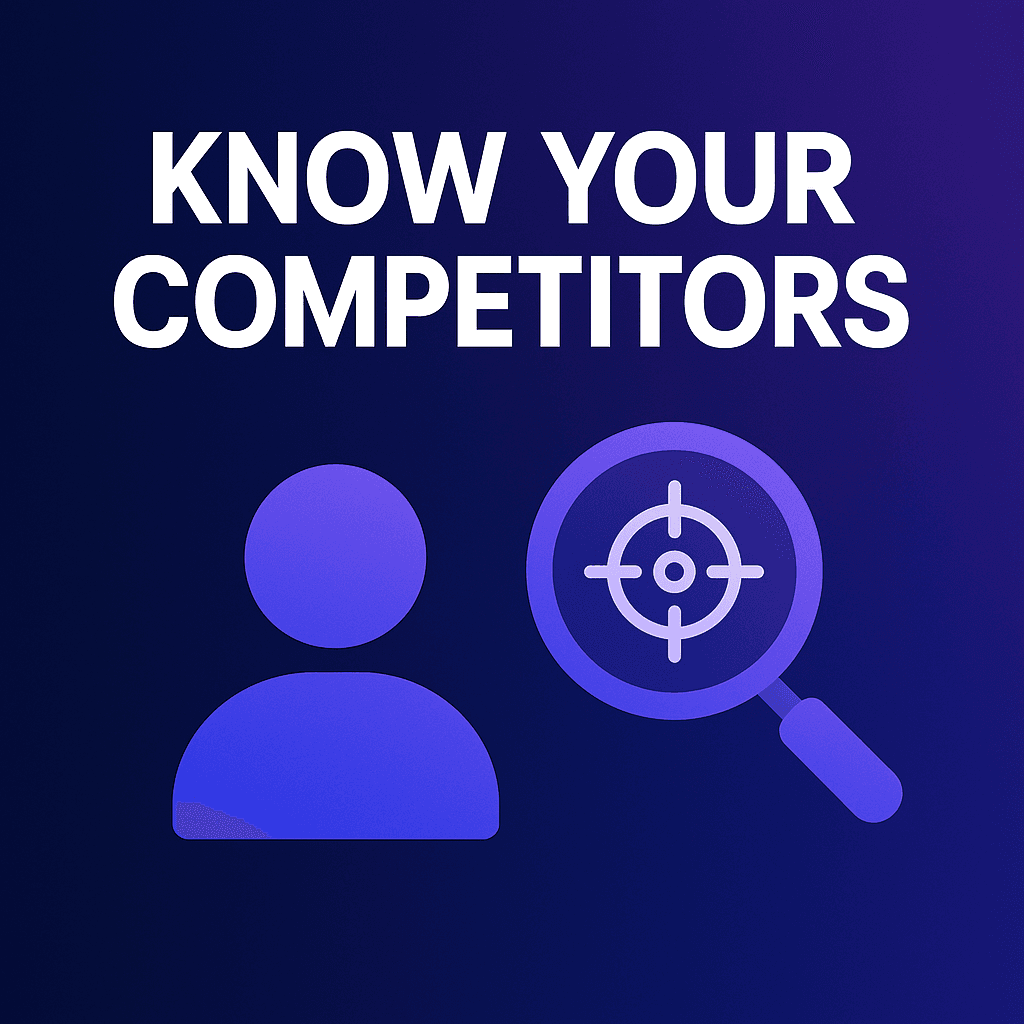Understanding the Concept of Competitors
Knowing who your competitors are isn't just about checking who sells the same product. It's about understanding who else is targeting your audience, solving their problems, and taking up space in their minds and budgets.
What is a Competitor?
A competitor is any business, brand, or solution that challenges your place in the market. This includes companies offering similar products or services, or even different ones that solve the same pain point.
Types of Competitors: Direct, Indirect, and Replacement
Competitors fall into three main categories: direct, indirect, and replacement. Understanding these helps you map your competitive landscape more accurately. For more on competitive intelligence, check our sales strategy articles.
Direct Competitors
Offer similar solutions to the same audience (e.g., Pepsi vs. Coca-Cola).
Indirect Competitors
Serve your target audience with a different approach (e.g., Netflix vs. cable TV).
Replacement Competitors
Solve the same problem in a totally different way (e.g., a gym membership vs. a fitness app).
Why Knowing Your Competition Matters
Identifying competitors allows you to position your offer strategically. It informs pricing, messaging, features, and customer experience — making your brand harder to ignore.
Benefits of Knowing Your Competitors
Knowing your competitors gives you a practical edge:
Improve Your Marketing Strategy
By analyzing how others promote themselves, you can spot opportunities to outperform them — from ad copy to call-to-actions.
Enhance Your Value Proposition
Seeing what others offer lets you refine what makes you unique. Highlight your differentiators clearly and confidently.
Anticipate Market Shifts
Competitor trends are market signals. Are others launching new features? Dropping prices? Their moves can alert you to changing customer needs.
Signs You Haven't Identified the Right Competitors
Here are warning signs that your competitor awareness needs work:
- Vague messaging that doesn't resonate with your audience
- Low conversion rates, even with high traffic
- Sudden drops in market share or engagement with no clear reason
If any of these ring true, it's time to go deeper.
Step-by-Step Guide to Identifying Your Competitors
Define Your Target Audience
Understanding whom you serve is the foundation. Create buyer personas with details like demographics, goals, and pain points.
List Your Main Products or Services
Clarify your offerings so you can benchmark them accurately. What problems do they solve? What needs do they fulfill?
Perform Keyword Research
Use tools like Google Keyword Planner or Ubersuggest. Find what terms your customers search for — those queries reveal your competitive landscape. Professional tools like SEMrush offer deeper insights into keyword gaps and competitor positioning.
Use Search Engines Strategically
Search your main keywords on Google or Bing. The top organic results and ads usually include your top competitors.
Analyze Ads and Social Media Content
Look at who's advertising on Facebook, LinkedIn, or Instagram with tools like Meta Ad Library. Track which brands consistently engage your audience.
Tools to Help Identify Competitors
Here's a toolbox to accelerate your competitor research:
- Google Search & Google Ads – Basic but powerful. Free and effective for initial competitor discovery.
- SEMrush / Ahrefs / SimilarWeb – For traffic, keywords, and backlinks. These platforms offer comprehensive competitive intelligence.
- Brandwatch / Sprout Social – For social listening and sentiment analysis.
- Karhuno AI – For real-time buying signals and competitor mentions across LinkedIn and the web. See pricing to get started.
How to Categorize and Prioritize Competitors
Use a competitor matrix to evaluate threats. Classify them by size, audience overlap, pricing, and feature set.
| Factor | Low Priority | Medium | High Priority |
|---|---|---|---|
| Market Share | 🟡 | 🟠 | 🔴 |
| Target Audience | 🟡 | 🟠 | 🔴 |
| Pricing Similarity | 🟡 | 🟠 | 🔴 |

Visual guide to competitor categorization and prioritization
Competitive Analysis vs. Competitor Identification
The Difference Between Identification and Analysis
Knowing your competitors is step one. Competitive analysis is the next level — where you study their marketing funnels, product roadmaps, customer sentiment, and more. For advanced competitive intelligence strategies, explore our resources library.
Mistakes to Avoid When Identifying Competitors
- Only focusing on big names — smaller players can be disruptive.
- Overlooking indirect solutions that customers might prefer.
- Failing to update your list regularly.
The market moves fast. So should you.
Industry Examples: How Competitor Discovery Works
SaaS
Competitors may offer similar features or integrations.
E-commerce
Think beyond product — consider branding and shipping.
Local Services
Location, reviews, and availability matter just as much.
Monitoring Competitors Over Time
Competitor monitoring isn't a one-time task. It requires consistent tracking to stay ahead of market shifts and opportunities.
Best Practices for Ongoing Monitoring
Use tools like Google Alerts or Mention to track brand mentions. Build a monthly or quarterly workflow to review pricing, messaging, and new launches. For automated competitor signal tracking, consider Karhuno AI's competitive intelligence features.
How to Use Competitor Insights in Your Strategy
Upgrade your SEO game based on content gaps.
Refine your brand voice to stand out in tone and approach.
Find innovation gaps they haven't addressed yet — and own them.
Frequently Asked Questions
1. What is the fastest way to find competitors?
Start with Google searches using your core product keywords.
2. What if I don't have any competitors?
You do — even if indirect. Customers always have alternatives.
3. How often should I review my competitor list?
At least every quarter. Markets shift quickly.
4. Can competitors change over time?
Absolutely. New entrants, pivots, and tech can disrupt any space.
5. What's better: copying or differentiating?
Always differentiate. Competitor analysis is for inspiration, not imitation.
6. Should startups bother with this early on?
Yes! It's essential for finding product-market fit and messaging clarity.
Conclusion: Own Your Market with Competitor Clarity
Knowing how to identify who your competitors are gives you a strategic edge. It fuels smarter marketing, sharper positioning, and faster growth.
By following the steps and tools in this guide, you're no longer guessing. You're building with clarity, confidence, and a clear view of your battlefield.
Ready to take your competitor intelligence to the next level? Explore more strategy guides or discover how Karhuno AI can automate your competitive research.
